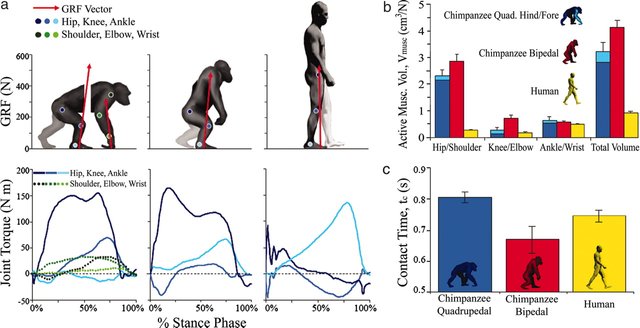A new discovery that would give a new focus to the theories on the appearance of the human being

Every day in the world amazing discoveries are made. For example, an international team of scientists discovered the remains of a child who lived in what is now South Africa almost 2,000 years ago. This has given scientists new clues about the origin of the human race thanks to the genome of aid to science. Scientists have developed a large study plan on the cells found in the kid's remains and have learned that humans emerged as a distinct population earlier than previously thought, between 350,000 and 260,000 years ago.
According to statements made by representatives of the group of researchers, the scientists managed to recover a complete version of the DNA of the ancient boy of his skeleton. In addition, thanks to this, researchers have said that the migrations of farmers from West Africa to East Africa about 2,000 years ago and then to southern Africa about 1,500 years ago, modified the genetics of Africans - and obscured the old patterns of descent - more than has been known. these migrations have been studied throughout history and have been documented by anthropologists as well.
The DNA of the old child was not affected by these migrations. As a result, it provides the best reference point so far to measure when Homo sapiens originated in Africa, according to evolutionary geneticist Carina Schlebusch of Uppsala University in Sweden and her colleagues conclude.
http://cdn.thinglink.me/api/image/486604304287793152/1240/10/scaletowidth
In line with the new estimate of the genetically derived age of human origins, another team has proposed that approximately 300,000 years of age, in addition, fossils found in Northwest Africa belonged to H. sapiens. Some researchers suspect that a skull from the Florisbad site in South Africa, dating about 260,000 years ago, qualifies as H. sapiens. However, researchers have stated for many years that the origin of the first humans could be located about 200,000 years ago. There is a broad consensus that several fossils at that time represent H. sapiens.
There is a great debate about the exact origins of Homo Sapiens; but there are still elements that need to be analyzed despite the new data provided by the remains of the child found in previous excavations of the coast near the city of Ballito Bay, according to the evolutionary geneticist at Uppsala University and co-author of the study Mattias Jakobsson. "We do not know whether the earliest fossils of Homo sapiens or the individual of Florisbad were genetically related to the boy from Ballito Bay," he says.
Therefore, the precise timing of the appearance of early human beings and the exact patterns of divergence among later human populations remain unclear to this day. However, researchers still have a lot of work to do, because they must recover the DNA of fossils dating back 200,000-300,000 years that are likely to belong to H. sapiens, in order to obtain new relevant data that can bring more knowledge to the scientists
As were the old fractions
In this diagram that we present in this article today, which is based on a new study of DNA, Homo sapiens originates as a genetically different species between 350,000 and 260,000 years ago. However, African populations branch out in two directions and are then subdivided about 200,000 years ago. While non-African populations, from below to the left, appeared shortly after 100,000 years ago.
The present human being is the result of human evolution, which thanks to all those migrations that happened throughout the different epochs of history, which allowed the continuous mixing of all those populations that contributed a great genetic value to the development of the human being as we know it today. DNA evidence found in more recent fossils, including those studied by the Schlebusch group, increasingly suggests that Stone Age human groups migrated from one part of Africa to another and mated with each other along the way . According to information provided by the international team of anthropologists, the DNA of 16 Africans, whose remains date back to 8,100-400 years, reveals a shared ancestry between hunter-gatherers from East Africa to South Africa that existed before the farmers of West Africa first came 2,000 years ago.

That old set of common genes still comprises a large and varied DNA fragment of the current Khoisan population in southern Africa, the Skoglund group has discovered. In addition, previous studies have found that Khoisan, which were groups of hunter-gatherers and related Khoikhoi, have shown more genetic diversity than any other human population known so far.
Schlebusch's team estimates that a genetic divide between the Khoisan and other Africans occurred approximately 260,000 years ago, shortly after the origins of mankind and around the time of the Florisbad individual. The Khoisan people then diverted into two genetically distinct populations around 200,000 years ago, the researchers calculate.
The DNA used to support the study came from site fossils unearthed at six South African sites. Three hunter-gatherers, including the boy from Ballito Bay; it is believed that they lived about 2,000 years ago. Four farmers lived between 500 and 300 years ago.
Researchers have made many comparisons of the DNA located in the fossils found with respect to the DNA of modern populations in Africa and elsewhere, which I have pointed out to scientists that between 9 and 30 percent of Khoisan's DNA comes today of a population of East Africa that had already crossed with the Eurasian people. Those East Africans were probably farmers who had migrated from West Africa and reached southern Africa about 1,500 years ago, according to theories explained by researchers.